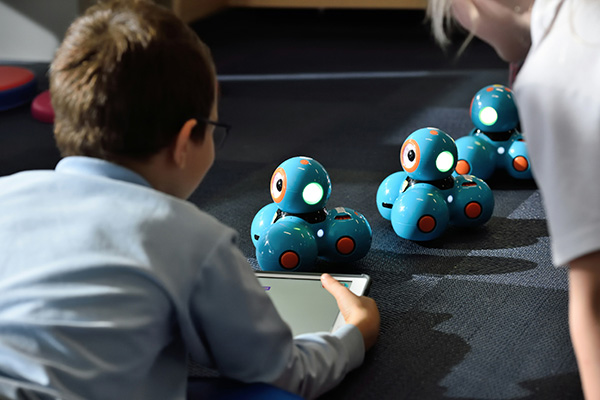
“Neurodiversity as an umbrella term used to describe alternative thinking styles such as Dyslexia, DCD (Dyspraxia), Dyscalculia, Autism and ADHD and refers to a world where neurological differences are recognised and respected as all other human variations.
In terms of inclusion, neurodiversity is about recognising and celebrating those who think differently. The many ‘challenges’ neurodivergent people face are more to do with the environment and systems they are placed in, often designed by a majority population.”
– Neurodiversity Celebration Week
I am mindful of this in my daily role as Head of Learning Support in an Early Years and Key Stage 1 school environment. We constantly adapt the children’s environment and resources to help them access the curriculum to their full potential. But what does this support look like, and could some of the strategies be useful when tutoring or working 1:1 with students?
Today I’d like to shine a spotlight on support for students with AD(H)D (Attention Deficit (Hyperactivity) Disorder), having been mentioned so often recently in the media. ADHD is a term which is used to describe people who typically have the following problems: overactive behaviour (hyperactivity); impulsive behaviour; difficulty in paying attention and distractibility (inattention). Here is a wonderful 3-minute video that explains ADHD in more detail.
The ADHD Foundation has produced some comprehensive guidance for supporting students.
A snapshot of some of the useful strategies include:
Organisational skills:
Have clear expectations by providing structure and flexibility in lessons.
Movement:
Provide opportunities for movement as regular intervals as this helps to stimulate a student’s vestibular system, helping them focus. Try giving students a job, or task that allows them to be active in a controlled way during the lesson. For example, carrying books, cleaning the board and so on. Integrate movement into the learning goal – ask students to act, make, do, perform and don’t be restricted by sitting them behind a desk!

– Wobble or wedge cushions that are filled with air. This can help sensory seeking children focus on how they sit, reducing fidgeting and helping to improve their focus.
– Weighted blankets and ‘weighty snakey’. Some students may need help to reduce anxiety and calm down. In those cases, the use of a weighted blanket placed on the knees, or a ‘weighty snakey’ toy placed around their shoulders can provide a calming pressure. This increases bodily awareness, reduces anxiety, promotes calm, as well as boosting focus and attention.
– Sensory fidget toys (also known as sensory fiddle toys) are commonly recommended by occupational therapists, or tried out by teachers for children who are constantly fiddling at their desk. According to the Giffin OT website:
“For some children, a fiddle toy might just mean the difference between concentrating and attending on what the teacher is saying or missing much of the lesson. They don’t work for every child though and in some cases can cause more of a distraction!”.
In my opinion, the simpler the fidget toy, the better. Even a piece of Blu Tac to squeeze can help to calm and focus some students.
– Use of special cue phrases:
If attention is waning, use special cues to stimulate interest such as: “Right, here we go”; “Wait for it”; “Now for the interesting bit”; “The next clip is….”
There are many more useful tips and strategies to explore in the ADHD Foundation Guidance. Don’t be afraid to try new strategies; each student is different and you may need to try a variety of strategies to find the ones that work for them. Students with ADHD tend to respond better to concrete learning experiences, often having high levels of creativity and welcome the chance to learn independently. Play to their strengths and also remember to keep positive. The world needs neurodiversity to enable society to progress and innovate, so let’s help these wonderfully talented students to thrive, not just survive.
Sarah Cox, SEND Consultant
Read More:
Neurodiversity Celebration Week – Resource Hub
Ten tips for using Wobble Cushions in the classroom and at home
Top five tips for choosing fidget toys at home and at school